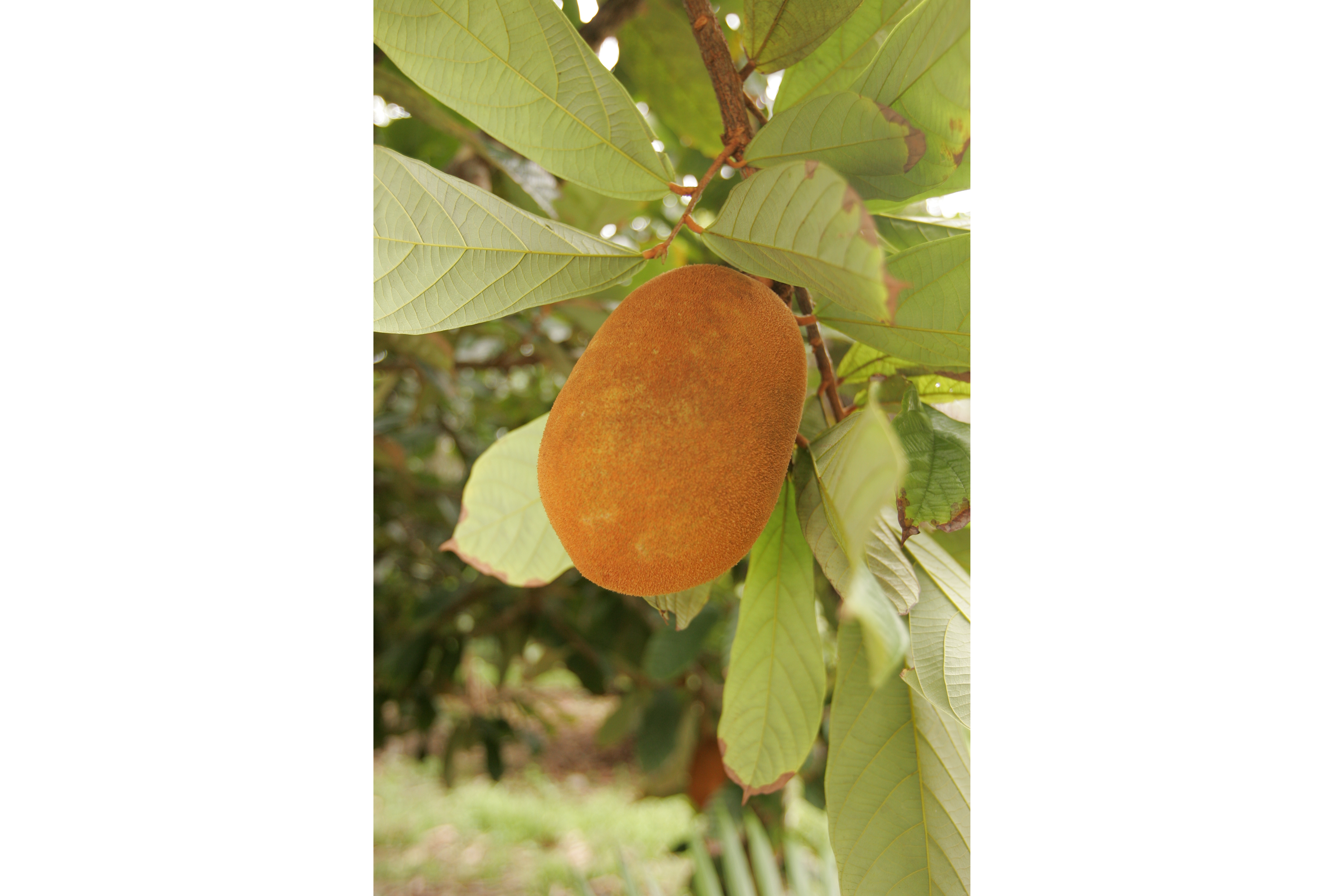Cupuaçu
(Theobroma grandiflorum)

Description
Theobroma grandiflorum, commonly known as cupuaçu, also spelled cupuassu, cupuazú, cupu assu, or copoasu, is a tropical rainforest tree related to cacao. Native and common throughout the Amazon basin, it is naturally cultivated in the jungles of Colombia, Bolivia and Peru and in the north of Brazil, with the largest production in Pará, Amazonas and Amapá. The pulp of the cupuaçu fruit is consumed throughout Central and South America, especially in the northern states of Brazil, and is used to make ice creams, snack bars, and other products. Cupuaçu trees usually range from 5–15 m (16–49 ft) in height, though some can reach 20 m (66 ft). They have brown bark, and the leaves range from 25–35 cm (9.8–13.8 in) long and 6–10 cm (2.4–3.9 in) across, with 9 or 10 pairs of veins. As they mature, the leaves change from pink-tinted to green, and eventually they begin bearing fruit. Flowers of cupuaçu are structurally complex, and require pollination from biotic vectors. The majority of cupuaçu trees are self-incompatible, which can result in decreased pollination levels, and consequently, a decrease in fruit yields. Pollination can also be negatively affected by environmental conditions. Pollinators, which include chrysomelid weevils and stingless bees, are unable to fly between flowers in heavy rains. Cupuaçu fruit opened The white pulp of the cupuaçu has an odour described as a mix of chocolate and pineapple and is frequently used in desserts, juices and sweets. The juice tastes primarily like pear, banana, passion fruit, and melon. Chocolate made from cupuaçu, very similar to that made from cocoa, is called cupulate. Cupuaçu is most commonly propagated from seed, but grafting and rooted cuttings are also used. Cupuaçu trees are often incorporated in agroforestry systems throughout the Amazon due to their high tolerance of infertile soils, which are predominate in the Amazon region. Cupuaçu is generally harvested from the ground once they have naturally fallen from the tree. It can be difficult to determine peak ripeness because there is no noticeable external color change in the fruit. However studies have shown that in Western Colombian Amazon conditions, fruits generally reach full maturity within 117 days after fruit set. Brazilians either eat it raw or use it in making sweets. Commercial food products include pulp and powder.
Taxonomic tree:







